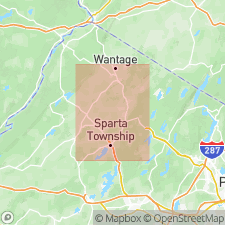
- Usage in publication:
-
- Losee gneiss*
- Modifications:
-
- Named
- Dominant lithology:
-
- Gneiss
- AAPG geologic province:
-
- Appalachian basin
Summary:
Losee gneiss. The group of foliated granitoid rocks here called Losee gneiss includes "Losee Pond granite" of Wolff and Brooks. They consist of more or less foliated medium- to coarse-grained granular rocks, in texture closely resembling granite. They are mainly light in color and in many weathered exposures nearly white. Distinguished lithologically from the varieties of Byram gneiss in containing oligoclase (soda-lime feldspar) instead of microcline or microperthite (potash feldspars). Differ from Pochuck gneiss in that they contain much quartz and only minor amounts of dark minerals. Regarded as an intrusive igneous rock younger than Franklin limestone and Pochuck gneiss, which they intrude. Relation to Byram gneiss not known, but the Pochuck is cut by granite and by masses of pegmatite.
Named for development around Losee Pond, Sussex Co., NJ.
Source: US geologic names lexicon (USGS Bull. 896, p. 1218).

- Usage in publication:
-
- Losee gneiss*
- Modifications:
-
- Overview
- AAPG geologic province:
-
- Appalachian basin
Summary:
The Losee gneiss (predominantly diorite gneiss) is now [ca. 1938] considered as probably older than Byram gneiss (predominantly granite gneiss). It is classified by E.B. Knopf and A.I. Jonas (USGS Bull. 799, correlation chart, 1929) as post-Glenarm. Intrudes Franklin limestone and Pickering gneiss.
Source: US geologic names lexicon (USGS Bull. 896, p. 1218).
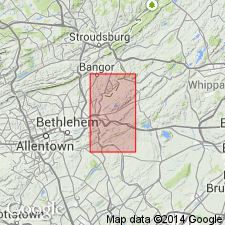
- Usage in publication:
-
- Losee gneiss*
- Modifications:
-
- Overview
- AAPG geologic province:
-
- Appalachian basin
Summary:
Losee gneiss consists mainly of oligoclase and quartz, smaller amounts of orthoclase, bright-green diopside, with hornblende, hypersthene, biotite, apatite, magnetite, sphene, and locally zircon. Losee, Pochuck gabbro gneiss, and Byram granite gneiss grade into each other through intermediate types. With decrease in oligoclase, Losee phases pass into the Byram phases, and with increase in pyroxene and hornblende, into phases of the Pochuck gabbro gneiss. Younger than Pickering gneiss and Franklin limestone.
Source: GNU records (USGS DDS-6; Reston GNULEX).

- Usage in publication:
-
- Losee Metamorphic Suite*
- Modifications:
-
- Reinstated
- Revised
- Age modified
- AAPG geologic province:
-
- Appalachian basin
Summary:
Losee Gneiss is here revised and reinstated as Losee Metamorphic Suite. Includes oligoclase-quartz gneiss, albite-oligoclase granite, and albite pegmatite. Unconformably overlies Proterozoic Y Hexenkopf Complex (new name). Intruded by Proterozoic Y Byram Intrusive Suite (revised and reinstated). Age changed from Precambrian to Proterozoic Y.
Source: GNU records (USGS DDS-6; Reston GNULEX).
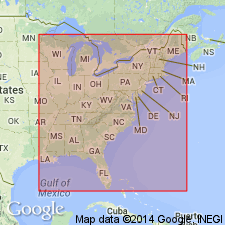
- Usage in publication:
-
- Losee Metamorphic Suite*
- Modifications:
-
- Geochronologic dating
- AAPG geologic province:
-
- Appalachian basin
Summary:
U-Pb zircon date for Losee Metamorphic Suite of 1026 +/-9 Ma (Aleinikoff and others, 1982) appears to be too young for a unit in basement in New Jersey Highlands or Durham Hills. Losee is intruded by Byram Intrusive Suite, dated at 1093 +/-7 Ma (Drake and others, 1990).
Source: GNU records (USGS DDS-6; Reston GNULEX).
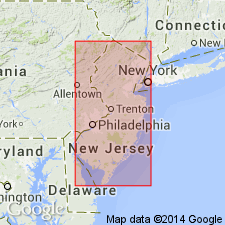
- Usage in publication:
-
- Losee Metamorphic Suite
- Modifications:
-
- Areal extent
- Overview
- AAPG geologic province:
-
- Appalachian basin
Summary:
Unit occurs throughout the Highlands in NJ, but is most abundant in the Greenwood Lake, Franklin, Hamburg, Boonton, Califon, High Bridge, and Belvidere quadrangles. Rocks range from well layered gneiss and granofels to indistinctly foliated granite and pegmatite. Characterized by light-greenish-gray, white-weathering, medium- to coarse-grained highly sodic rocks. Similar rocks in VT have yielded ages of 1308 to 1357 Ma and in the Adirondacks of NY of 1300 to 1330 Ma. Author believes the Losee to be of about the same age.
Source: GNU records (USGS DDS-6; Reston GNULEX).
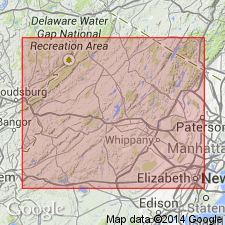
- Usage in publication:
-
- Losee Metamorphic Suite*
- Modifications:
-
- Redescribed
- Revised
- Dominant lithology:
-
- Diorite
- Tonalite
- Granite
- Amphibolite
- Gneiss
- AAPG geologic province:
-
- Piedmont-Blue Ridge province
Summary:
Middle Proterozoic Losee Metamorphic Suite was previously restricted to dacitic, tonalitic, and trondhjemitic rocks, including quartz-oligoclase gneiss, hornblende-quartz-oligoclase gneiss, biotite-quartz-oligoclase gneiss, albite-oligoclase granite, interlayered amphibolite, and local pegmatite. Losee is redescribed and revised to include previously unnamed charnockitic rocks of calc-alkalic affinity, including quartz-rich hypersthene-quartz-plagioclase gneiss, and quartz-poor hypersthene diorite to hypersthene tonalite, also interlayered with amphibolite.
Source: GNU records (USGS DDS-6; Reston GNULEX).
For more information, please contact Nancy Stamm, Geologic Names Committee Secretary.
Asterisk (*) indicates published by U.S. Geological Survey authors.
"No current usage" (†) implies that a name has been abandoned or has fallen into disuse. Former usage and, if known, replacement name given in parentheses ( ).
Slash (/) indicates name conflicts with nomenclatural guidelines (CSN, 1933; ACSN, 1961, 1970; NACSN, 1983, 2005, 2021). May be explained within brackets ([ ]).

